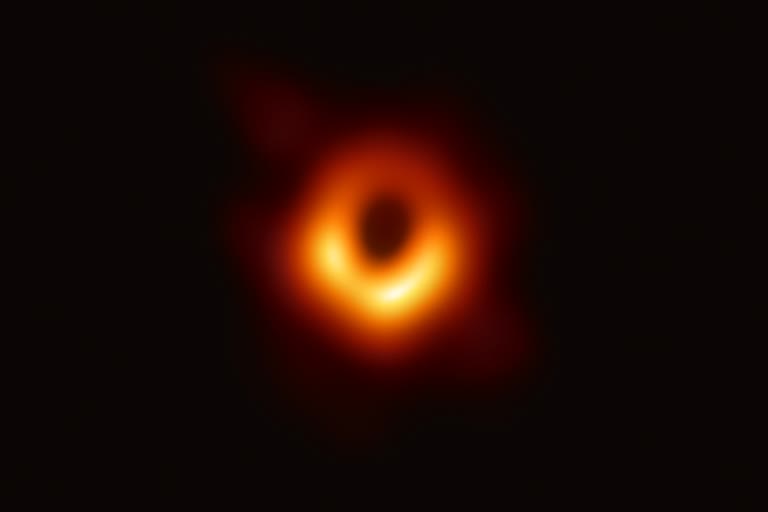Paris: Astronomers have unveiled the first photo of a black hole, one of the star-devouring monsters scattered throughout the Universe and obscured by impenetrable shields of gravity.
The image of a dark core encircled by a flame-orange halo of white-hot plasma looks like any number of artists' renderings over the last 30 years.
But this time, it's the real deal.
"The history of science will be divided into the time before the image, and the time after the image," said Michael Kramer, director at the Max Planck Institute for Radio Astronomy.
Carlos Moedas, European Commissioner for Research, Science and Innovation called the feat a "huge breakthrough for humanity."
The supermassive black hole immortalised by a far-flung network of radio telescopes is 50 million lightyears away at the centre of a galaxy known as M87.
"It's a distance that we could have barely imagined," Frederic Gueth, an astronomer at France's National Centre for Scientific Research (CNRS) and co-author of studies detailing the findings, told AFP.
Most speculation had centred on the other candidate targeted by the Event Horizon Telescope: Sagittarius A*, a closer but smaller black hole at the centre of our own galaxy, the Milky Way.
Locking down an image of M87's supermassive black hole at such distance is comparable to photographing a pebble on the Moon, the scientists said.
It was also very much a team effort.
"Instead of constructing a giant telescope that would collapse under its own weight, we combined many observatories," Michael Bremer, an astronomer at the Institute for Millimetric Radio Astronomy (IRAM) in Grenoble, told AFP on Wednesday.
Over several days in April 2017, eight radio telescopes in Hawaii, Arizona, Spain, Mexico, Chile, and the South Pole zeroed in on Sag A* and M87.
Knitted together, they formed a virtual observatory some 12,000 kilometres across - roughly the diameter of Earth.
"The data is like an incomplete puzzle set," said team member Monika Moscibrodzka, an astronomer at Radboud University.
"We only see pieces of the real true image, and then we have to fill in the gaps of the missing pieces."
In the end, M87 was more photogenic.
Like a fidgety child, Sag A* was too "active" to capture a clear picture, the scientists said.
"What we see in the image is the shadow of the black hole's rim - known as the event horizon, or the point of no return - set against the luminous accretion disk," Gueth told AFP.
The unprecedented image - so often imagined in science and science fiction - has been analysed in six studies co-authored by 200 experts from 60-odd institutions and published Wednesday in Astrophysical Journal Letters.
